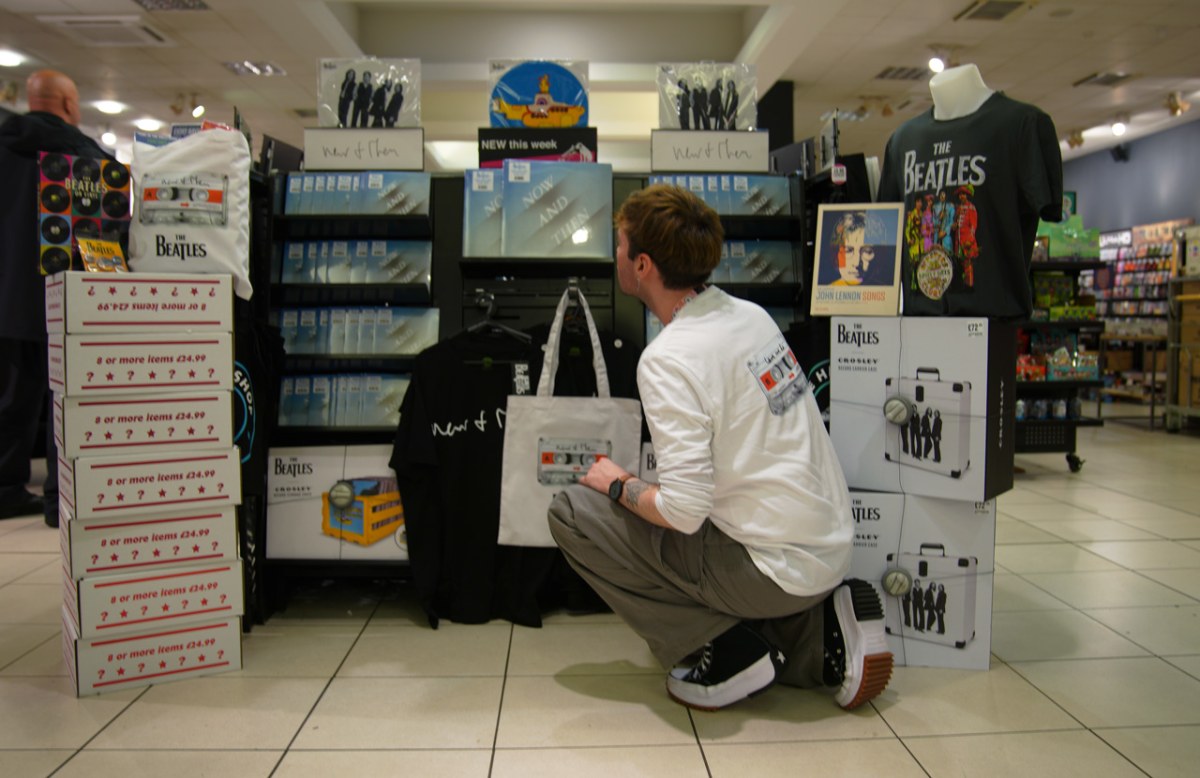[ad_1]
Branded is a weekly column devoted to the intersection of marketing, business, design, and culture.
The Beatles hit No. 1 this week. It wasn’t the first time the band had topped a pop chart, of course. And having the top-selling single isn’t quite the proposition it used to be. But the first-day sales alone were enough for the “new” song, “Now and Then,” to debut atop Billboard’s digital sales ranking. And that’s a remarkable example of how the Beatles—and the idea of the Beatles—have remained relevant more than half a century after the band broke up.
“Now and Then” features a John Lennon homemade demo vocal from the late 1970s. Its quality was too muddy to salvage until—as Fast Company’s David Salazar explains more fully here—recent advances in digital, AI-powered technology made it possible to extract the vocal and build instrumentation around it. That includes contemporary playing and singing by Paul McCartney and Ringo Starr, as well as George Harrison guitar parts from an earlier, abandoned attempt to rescue the song back in the 1990s. The result is being explicitly promoted as “the last Beatles song.”

[Photo: Peter Byrne/PA Images/Getty Images]
It’s a shrewd positioning that neatly conveys the sense of a singular pop culture event (even, it should be noted, to those who might question whether this is truly a “Beatles song” at all). And it was rolled out as an event—there was not just a new music video directed by Peter Jackson, there was a teaser “behind the scenes” video about the song. The digital single was paired with a “B-side” remaster of “Love Me Do,” the Beatles’ first release. (On Spotify, there are links to buy the physical single, or a related T-shirt sporting the songs’ names in Lennon’s handwriting.) More to the point, “Now and Then” is included as a “previously unreleased” track on The Beatles: 1967-1970, being rereleased with The Beatles 1962-1966, often called the “blue” and “red” albums; expanded 50th-anniversary versions of both compilations drop today.
Announcing “the last Beatles song” guarantees an avalanche of press coverage, as generations of obsessives were bound to seize the moment to revisit the rich mythology of Beatles-ness and dive deep into the latest iteration. But the AI/tech twist has spiked the already-powerful nostalgia with a contemporary sheen that is, really, quite on-brand: the band famously embraced the new, and experimented constantly—particularly with evolving recording technology.
That said, the band has not been shy about opportunities to repackage its legacy for new generations of fans. The business of the Beatles and the Apple Corps entity through which McCartney, Starr, and the Lennon and Harrison estates ultimately control that legacy, has a complicated history. But it has ultimately proven quite lucrative (generating a reported $67 million in royalties in 2019, for example), and no doubt the strategic rerelease, or recontextualizing, of the band’s catalog has been key. This includes everything from expanded versions of classic albums overflowing with alternate and archival takes and the Cirque du Soleil show, Love, to the album, 1—a collection of every number-one Beatles single between 1962 and 1970, which sold more than 30 million copies.
“Now and Then” is actually rooted in a couple of prior Beatles-history projects. Two previous Lennon demos that were reworked into Beatles songs were released in conjunction with another repackaging, the massive Anthology collection, in two volumes in the 1990s. It was on those sessions that Harrison recorded a guitar part for “Now and Then” before that tune was abandoned due to the “rubbish” sound quality. The technology used to revive it was developed to aid director Peter Jackson in another archival adventure, the 2021 documentary, The Beatles: Get Back.
This rich history of mining, well, the band’s own history, has only made the Beatles seem more eternal. And that guarantees not just coverage and interest, but debate. Some found “Now and Then” surprisingly moving. Others were a bit skeptical—particularly of the gimmicky video incorporating old clips of Lennon and Harrison seemingly playing along with McCartney and Starr. (“An abomination,” Slate declared.) “‘Now and Then’ is just okay. And that’s not nearly good enough,” argued Geoff Edgers, national arts reporter for the Washington Post. But New York Times music critic John Pareles probably put it best: “Its existence matters more than its quality.”
Such debates only underscore that the Beatles are still worth debating: Almost every opinion offered is grounded in the assumption that the band is great, and its legacy is endless. Many members of Gen Z, born after the Anthology Lennon tracks were released, seem to agree. The band is popular on TikTok—and abomination or not, the “Now and Then” video already has 22 million views on YouTube. (That’s more than the first single off the recent Rolling Stones album.) All the Beatles have to do, it seems, is provide the occasional excuse to talk about the Beatles, now and then. This one probably won’t be the last.
[ad_2]
Source link